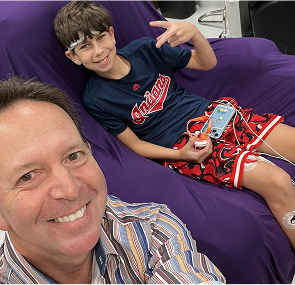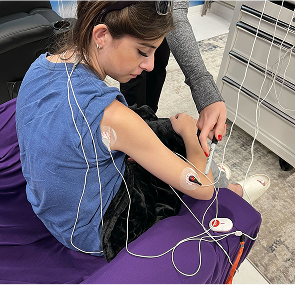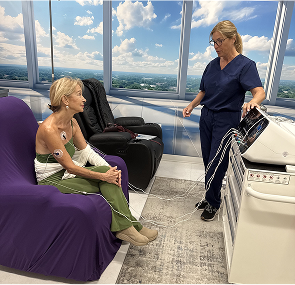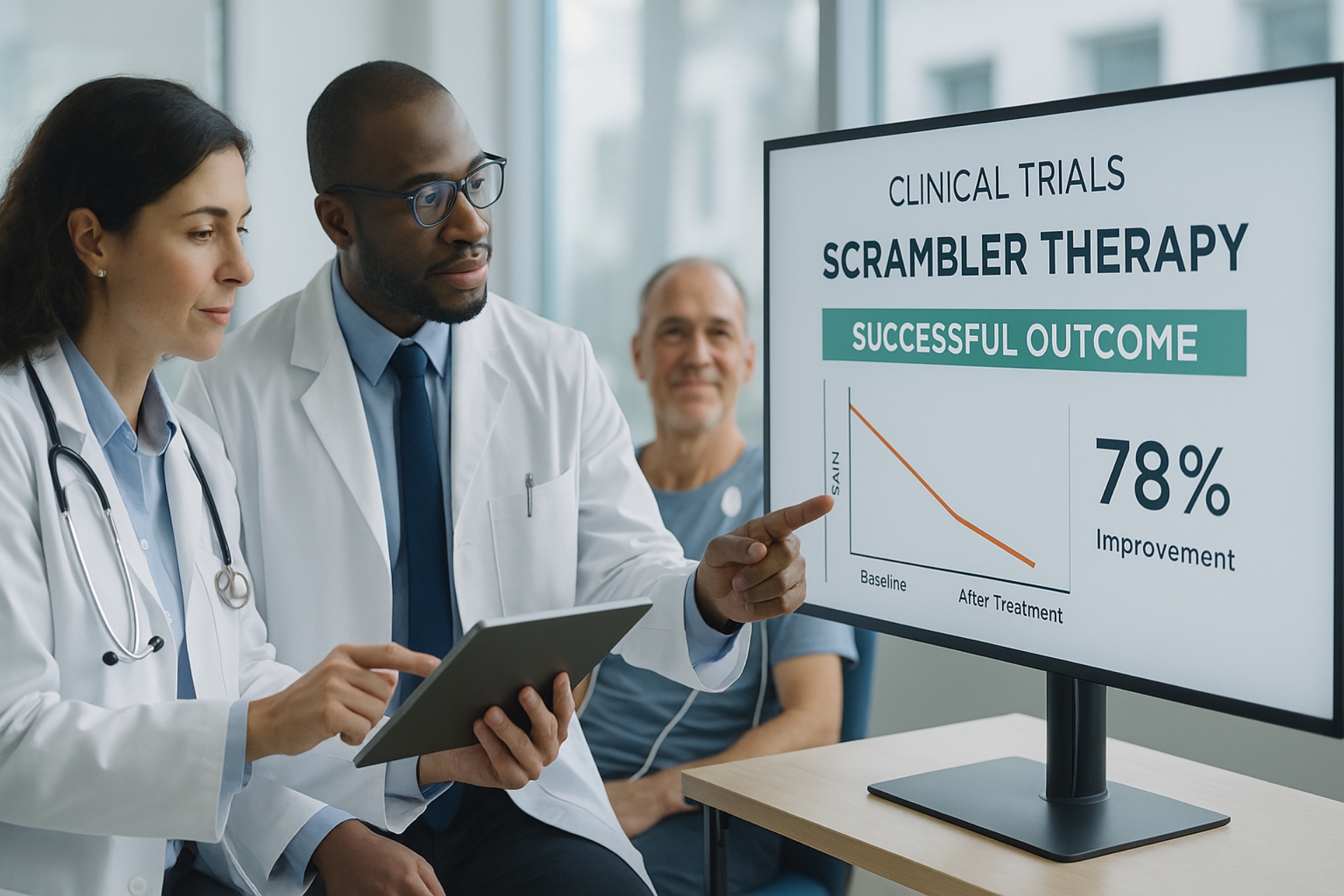NIH Clinical Trials Validates Scrambler Therapy for Chemotherapy-Induced Neuropathy
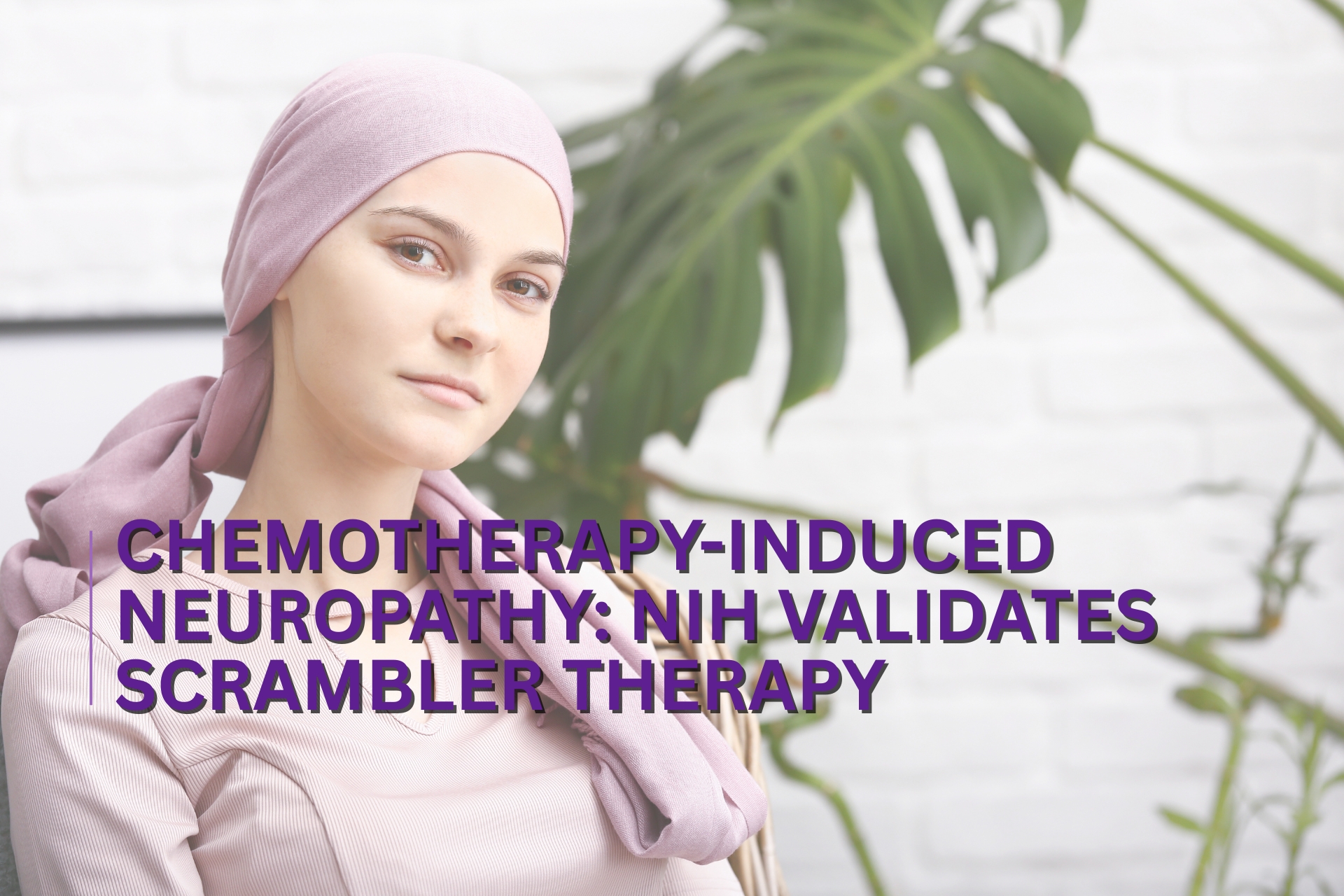
Chemotherapy-induced neuropathy (CIN) is a common and often debilitating side effect of cancer treatment. It occurs when chemotherapy drugs damage the peripheral nervous system, particularly sensory neurons.
The condition is especially linked with platinum-based drugs (like cisplatin, carboplatin), taxanes (like paclitaxel), and vinca alkaloids (like vincristine). These cytotoxic agents trigger axonal degeneration and nerve toxicity, often leading to long-term discomfort.
Key features of CIN include:
- Glove-and-stocking pattern sensory loss
- Pain, tingling, and numbness, especially in the hands and feet
- Reduced motor control or balance issues
The definition of CIN centers around nerve damage from chemotherapy, where toxic drugs interrupt normal axon signaling and damage nerve fibers.
CIN prevalence ranges from 30% to 60% of patients depending on the type and dosage of chemotherapy, with some studies reporting even higher rates.
Next, let’s review the symptoms that affect patients' daily lives.
Symptoms and Impact of Chemotherapy-Induced Neuropathy
Neuropathic pain, burning sensations, and tingling brought on by chemotherapy are the main signs of CIN. These adverse effects could appear weeks after treatment or start during it. Is participation in a trial paid for?
Most Common Symptoms:
- Tingling and numbness in fingers and toes
- Sharp or shooting pain
- Burning sensation
- Sensitivity to temperature or touch
- Motor impairment affecting walking or balance
These nerve side effects significantly reduce quality of life. Patients often experience:
- Difficulty sleeping due to constant discomfort
- Challenges in walking or driving
- Emotional stress, anxiety, or depression
- Limitations in physical activity and work
A study in The Oncologist found that 47% of CIN patients reported ongoing symptoms six months post-treatment. Many describe the pain as relentless and disruptive to basic tasks.
We’ll now explore why this happens biologically.
Causes and Mechanisms Behind CIN
The mechanism of CIN involves a mix of biochemical, pharmacological, and neurological damage caused by anti-cancer drugs.
Chemotherapeutic agents target fast-dividing cells, but also harm neurons unintentionally.
Common Drug Categories That Cause CIN:
CIN is often linked to:
- Oxidative stress in peripheral neurons
- Mitochondrial dysfunction that halts energy production
- Degeneration of sensory axons
- Altered calcium signaling and ion channel function
This multi-factorial neurotoxicity explains why CIN is hard to reverse and why traditional treatments often fail.
In the next section, we’ll break down those existing treatment approaches.
Traditional Treatments and Their Limitations
Most conventional CIN treatments offer limited relief and primarily focus on symptom management, not reversal.
Common Drugs Used:
- Duloxetine (SNRI): modest pain relief in some patients
- Gabapentin and Pregabalin: target calcium channels to reduce excitability
- Amitriptyline: tricyclic antidepressant with sedative effects
- Opioids: reserved for severe cases, often with risks of dependency
These options suffer from:
- Low efficacy in clinical trials
- Polypharmacy risks due to cancer comorbidities
- Pain masking, not addressing the root cause
- High dropout rates due to side effects like fatigue, dizziness, and nausea
Only duloxetine has demonstrated statistically significant improvement in randomized controlled trials, but even then, only about 30% of users report meaningful relief.
This leads us to a promising alternative—Scrambler Therapy.
Introduction to Scrambler Therapy
Scrambler Therapy is a non-invasive electrocutaneous stimulation that aims to reprogram pain signals sent to the brain. Developed from the information theory of pain, it works by using cutaneous electrodes to send "non-pain" messages.
Key Features:
- Uses the MC-5A Scrambler Therapy device
- Sends synthetic, non-pain signals to pain-processing centers
- Promotes neuroplasticity and pain remapping
- Differs from TENS by targeting central pain perception
Scrambler Therapy works with the central nervous system to retrain it to perceive pain in a different way than TENS, which just suppresses peripheral pain signals.
The FDA classifies it as a Class II medical device, and it has shown benefits without the side effects linked to drug-based therapies.
Now let’s look at how the NIH validated this breakthrough.
NIH Clinical Trials: Validation of Scrambler Therapy
A pivotal NIH-funded clinical trial, listed on ClinicalTrials.gov, assessed Scrambler Therapy for chemotherapy-induced neuropathy.
Trial Design:
- Randomized controlled trial
- Double-blind and placebo-controlled
- Patients with moderate to severe neuropathic pain from chemotherapy
- Measured outcomes via VAS score (Visual Analog Scale)
Key Results:
- VAS score reduction by 50–70% after 10 sessions
- Durable pain relief lasting up to 3 months post-treatment
- Zero serious adverse events
- Statistically significant outcomes (p < 0.001)
These findings suggest Scrambler Therapy can effectively treat CIN where conventional medications fail. It also sets a new standard for non-pharmacological interventions in oncology pain care.
Now let's examine this therapy in comparison to other widely used methods.
Scrambler Therapy vs. Other Therapies
Scrambler Therapy provides several advantages over opioids, TENS, and antidepressants:
Scrambler therapy vs traditional treatments shows a clear advantage in side-effect profile, efficacy, and sustainability of relief.
Now, let's hear from patients who have personally benefited from these advantages.
Patient Case Studies and Success Stories
Case 1:
54-year-old breast cancer survivor with 2 years of chronic foot burning after paclitaxel. After 10 sessions of Scrambler Therapy:
- Pain dropped from 8/10 to 1/10
- She resumed walking 2 km daily
- Sleep normalized within 3 weeks
Case 2:
65-year-old colon cancer patient, severe glove-and-stocking neuropathy post-oxaliplatin. Reported:
- Pain relief by the third session
- Discontinued gabapentin
- Improved daily functioning and reduced fall risk
These real CIN recovery stories reflect broader patient-reported outcomes like enhanced mobility, better sleep, and improved mood.
Let’s now review the safety profile.
Safety, Side Effects, and Contraindications
Scrambler Therapy is FDA-approved for pain management and generally well-tolerated.
Safety Profile:
- Non-invasive, drug-free
- No long-term side effects reported
- Mild, temporary skin irritation in rare cases
Contraindications:
- Implanted cardiac pacemakers or defibrillators
- Active skin infections at electrode sites
- Severe hypersensitivity to electrical stimulation
Patients with complex diseases or comorbidities should get medical clearance. Most clinics follow standardized safety protocols to screen patients.
We now examine how it fits into cancer care routines.
Integrating Scrambler Therapy into Oncology Care
Many oncology centers now integrate Scrambler Therapy as part of a multidisciplinary pain management plan.
Integration Pathways:
- Outpatient clinics for neuropathy follow-up
- Pain management specialists offer it alongside other rehab options
- Used in survivorship planning and late-effect clinics
A growing number of oncologists support its inclusion due to:
- Improved patient adherence
- Compatibility with existing chemo regimens
- Non-interference with cancer medications
Let’s now explore future trends and innovations in this field.
Future Research Directions and Innovations
Upcoming Advancements:
- AI-guided signal customization for patient-specific patterns
- Next-gen devices with wireless capabilities
- Ongoing longitudinal studies funded by NIH to evaluate chronic use
- Integration with wearable sensors for real-time feedback
The roadmap includes broader application beyond cancer—diabetic neuropathy, post-surgical pain, and CRPS are already being tested.
We close with answers to top patient queries.
Frequently Asked Questions (FAQs)
Does Scrambler Therapy really work for neuropathy?
Yes. NIH trials show 50–70% pain reduction in CIN patients with lasting effects.
How long does Scrambler Therapy last?
Pain relief can last from several weeks to months after a full 10-session protocol.
Can chemotherapy neuropathy go away?
Yes, in some patients, especially with early intervention. Scrambler Therapy can accelerate recovery.
Is Scrambler Therapy FDA approved
Yes. The MC-5A device is FDA-cleared for pain treatment, including chemotherapy-related pain.
Is Scrambler Therapy covered by insurance
Some private insurers and VA programs may reimburse it. Coverage varies; check with your provider.
Experiencing Chronic Pain in South Florida?

Discover South Florida Scrambler Therapy is one of the nation’s leading clinics for noninvasive chronic pain relief, offering FDA-cleared Scrambler Therapy® for adults and children. Co-founded by Dr. Rick Markson, one of the few practitioners worldwide to receive advanced certification directly from the therapy’s inventor in Rome, our clinic delivers globally recognized expertise with compassionate, personalized care. If you or a loved one is living with treatment-resistant nerve pain, we invite you to schedule a consultation and explore a life beyond pain.
Recommended Reads:
📘 What is scrambler therapy?
📘 What to Expect During a Scrambler Session
📘 CRPS Pain Relief Without Drugs—Real Patient Stories
📘 Conditions that scrambler therapy can treat
Take the Next Step: Free Consultation at South Florida Scrambler

Every day counts when we suffer from chronic pain. South Florida Scrambler Therapy offers a free initial consultation to determine if Scrambler is right for you. Schedule Today:
- Speak directly with Dr. Rick Markson’s team
- Learn about treatment protocols and insurance
- Complete a customized treatment plan
- Start seeing results within days, not months
📞 Call Now or Visit website: www.southfloridascramblertherapy.com
📍 We serve Palm Beach, Fort Lauderdale, and Miami from our location at 100 NW 100th Ave, Plantation
You Can Follow Us through Our Social Media:
📸Instagram—Day-in-the-life stories from our patients
👍Facebook—Success journeys and community support
You deserve to laugh, and enjoy life without pain. The journey starts here.
Start Your Pain-Free Journey Today
